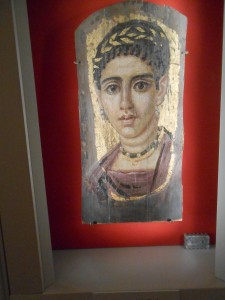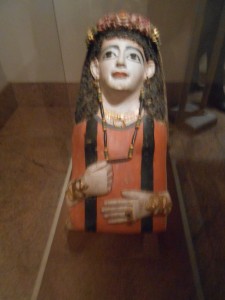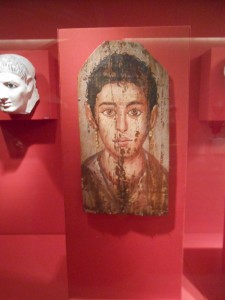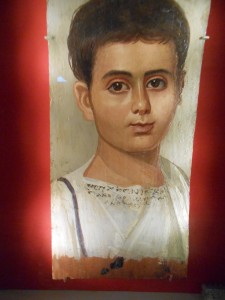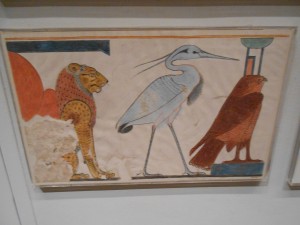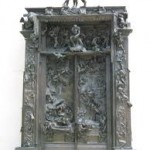Egyptian funerary art is something pretty special. In the arid climate of Egypt, the pictures painted on the lids of sarcophagi are sometimes very well preserved, and the Metropolitan Museum of Art has a nice collection of such funerary art. What is especially interesting about this practice is that it dates to the Greco-Roman period, specifically to the period just before and during the NT era. Take for example the last of these paintings above. It dates to 100-150 A.D. and is painted in thick wax, which helped preserve the image itself. Of course since every picture tells a story, in this case we are dealing with the sad story of a boy named Euthyches who died far too early. Painting on wood or papyrus is one thing, painting on some sort of stone is another. Contrast here the picture of the ibis below with the pictures of humans above.
The art and indeed the culture of Egypt was far advanced ahead of what one finds for instance in Israel in the comparable periods of history. But our interest in the funerary art has to do with the way it reflects their afterlife theology. The Egyptians did indeed believe you could take it with you. They believed in being buried with various objects you would need in the afterlife, including your body which was mummified to help preserve it. The internal organs were pickled and put in canopic jars as well. Of course the problem with that was that as advanced as the Egyptians were, even in ancient medicine, they did not think that the gray matter in the head was of value, only the internal organs. So they discarded all that goo in the head. One could say the afterlife for Egyptians was a no-brainer.
Like Pharisees of Paul’s ilk, and many other early Jews such as Jesus, a positive bodily afterlife was envisioned. This stands in contrast to the Sadducees who maintained the older OT theology of Sheol, where one simply died and was gathered to one’s ancestors, the spirits of the dead, and no resurrection was envisioned. Thus, in some ways, the Greco-Roman theology of the soul and the afterlife comported better with the OT theology of Sheol, than the later apocalyptic theology of resurrection first seen in Daniel 12, and it is this latter theology that is also closer to, but not identical with Egyptian beliefs in the afterlife.


